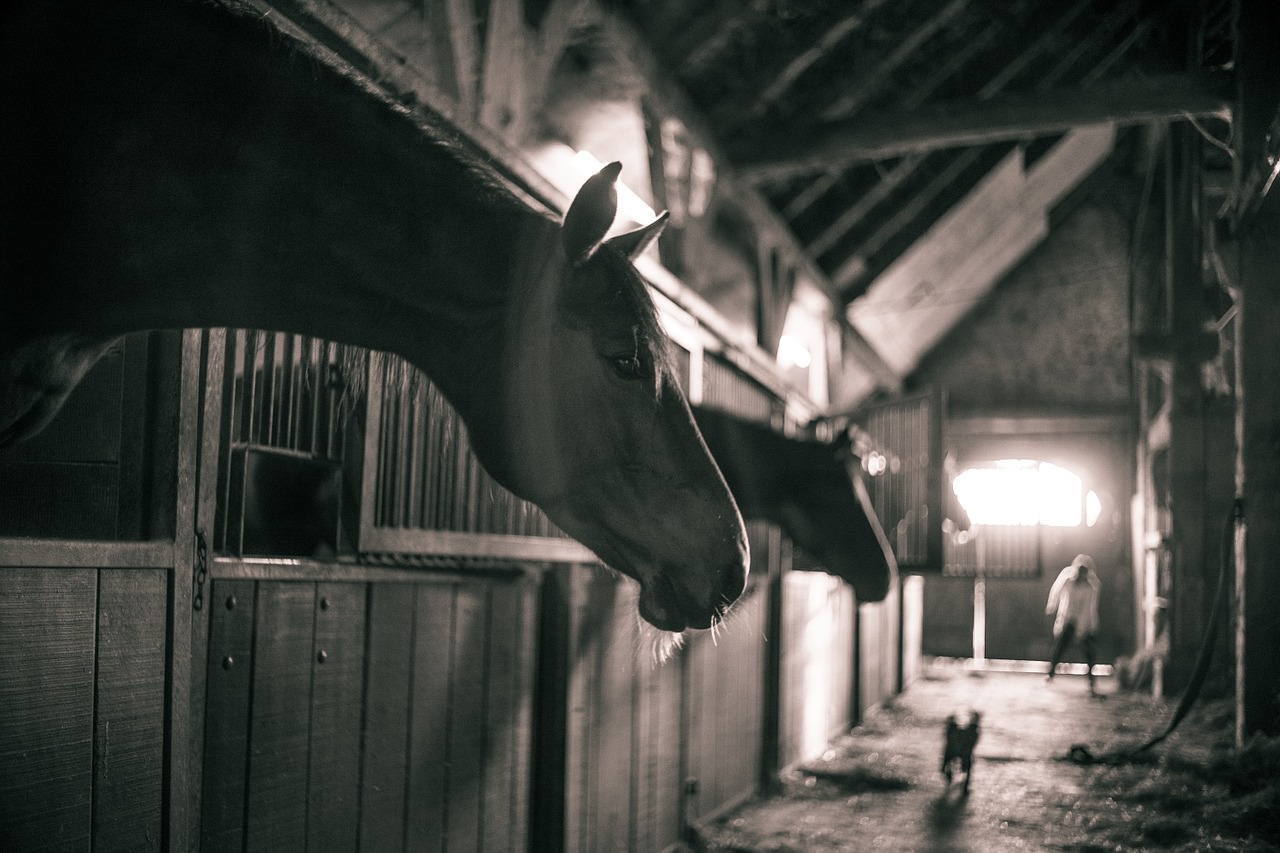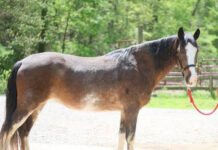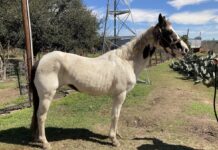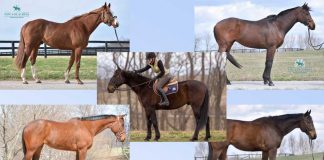If the idea of caring for 50 horses isn’t daunting enough, consider all of the expenses that come with that endeavor. Then imagine relying on an unsteady income of donations, grants and fundraising to get by.

Every year, Lori Neagle, executive director of the Kentucky Equine Humane Center (KyEHC), outlines a budget that estimates the organization’s potential annual income and expenses. Unfortunately, the list of costs is significantly longer than that of revenue sources. Here we will provide an explanation of the KyEHC’s income and expenses along with some real monetary values from the 2008 budget.
“Our annual budget is right around $270,000,” says Neagle. “We’re pretty much on target with it. Depending on how much we get in donations throughout the year as far as goods and services, that number can be cut. But that’s not guaranteed.”
Most of the center’s funds come in the form of grants, foundation gifts, fundraising, and corporate and personal donations. Contrary to what many people think, adoption fees are not a dependable source of income.
“We can’t survive on adoption fees,” says Neagle. “I think that’s a misconception from a lot of people who are getting started in a rescue program. They think they will generate a good amount of income from adoption fees, but that’s not the case right now—not in this economy. If the horse market was little different, we might bring in more money [from adoption fees].” Neagle also points out that the center does not receive state or federal funding. Because the KyEHC is a non-profit 501(c)(3) organization, all of its income goes to the facility and the horses.
| 2008 Income (All Not Shown) | |
| Grants | $98,788 |
| Foundation Gifts | $30,300 |
| Personal Donations | $57,343 |
| Corporate Donations | $67,901 |
| Fundraising | $4,436 |
| Adoption Fees | $5,824 |
| Total Income | $277,521 |
Expenses
The most costly expenditures at the KyEHC are feed, hay and bedding. Although the center receives some of these products via donations, that doesn’t eliminate the need to purchase them. Hay in particular can be a troublesome expense because the price and availability are easily affected by weather. When a drought hit Kentucky in 2007 and 2008, it was a struggle to get hay. “We had a hard time locating it, and then we had to pay a high price for what we could get,” says Neagle.
Luckily, the center has received many calls regarding hay donations this year. In these cases, however, getting the hay to the center can be difficult.
“Our biggest obstacle is people have hay, but they either want us to cut it, which we don’t have the equipment for, or they want us to pick it up; we don’t have the capabilities to do that either,” says Neagle.
The KyEHC also feeds the horses a pelleted grain. Not all of them are given grain every day, unless they have special needs, such as senior horses and Thoroughbreds coming off the track, which Neagle says have a tendency to lose weight. Neagle will go through any donated grain before purchasing it.
“If we get something different, it’s usually not that far off from what we’re feeding,” says Neagle. “Sometimes we get sweet feed, which we normally don’t feed, but we’ll just put a little bit in as filler to use it up.
“It’s all monitored,” she continues. “It’s not like we change from one day to the next. We just add it in here and there.”
Although most of the KyEHC horses live in large pastures, there are always some in stalls; this means the center needs hay and grain all year. “It’s nice in the summer because we don’t use as much hay and grain, but we go through quite a bit in the winter,” says Neagle. “We take whatever people are willing to give us.”
2008 Feed Expenses $21,765
Bedding is another costly expenditure. Because there are always horses going in and out of the barn, the KyEHC goes through a lot of straw. The center does receive bedding donations, but not as much as hay and grain. Fortunately, it has never been faced with not having enough of these items to support all of the horses.
2008 Bedding Expenses $6,028
As for health care, the KyEHC generally receives discounts on veterinary and farrier services. “A lot of our vet expenses are discounted by 50 percent or are completely donated,” says Neagle. “We never really pay full price for veterinary care. The same goes for our farriers.
“The extra expenses come when horses have problems,” continues Neagle. “If a horse gets sick or injured, that can be costly.”
2008 Farrier Expenses $5,911
2008 Veterinary Expenses $19,023
Besides taking care of the horses, the upkeep of 72 acres is not cheap. With that amount of land, the KyEHC cannot rely solely on volunteers to mow the fields or maintain and repair fences and equipment.
2008 Farm Supplies $4,152
2008 Farm Maintenance
& Repairs $7,954
2008
Farm Equipment $17,045
2008 Labor Expenses $4,597
Other expenses the center incurs every year include advertising, printing, copying and office supplies. Finally, when running such a large facility with many people and horses coming and going, insurance is a must; it is also very costly. The KyEHC is required to have the following plans: property and casualty, workman’s compensation, a board of directors policy, and liability.
2008 Insurance $11,262
2008 Other Expenses $6,143
Keeping Costs Down
Neagle does what she can to keep the expenses to a minimum by requesting donations before purchasing anything, and then searching for the best prices when she does have to buy products or services.
“We just have to watch every penny,” says Neagle. “We are always soliciting companies that manufacture horse products and supplies. People donate items that are gently used, and that helps a lot. We don’t turn anything away.”
2008 Total Expenses
(All Not Shown) $304,587
2008 Net Income -$23,309
Unfortunately, the KyEHC’s expenses far outweigh its income. However, the task of balancing a budget is a worthwhile effort if it means saving the lives of many equines.
Anyone can help the KyEHC and other non-profit equine rescues by donating much-needed items such as feed, hay, bedding and other everyday necessities. Go to www.kyehc.org to see the organization’s wish list.
This article originally appeared in the October 2009 issue of Horse Illustrated. Click here to subscribe.







The cost of saving which is worth it can sure cost a lot my heart goes out to these amazing charities you guys are so amazing for wanting to do this just amazing thank you so so much
That seems like alot of money, however the basic idea that you get to help these animals is worth any cost.
Thank you for the wonderful acts of charity you show daily! I’m so glad that you try to save these horses!